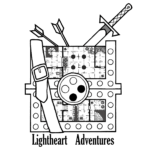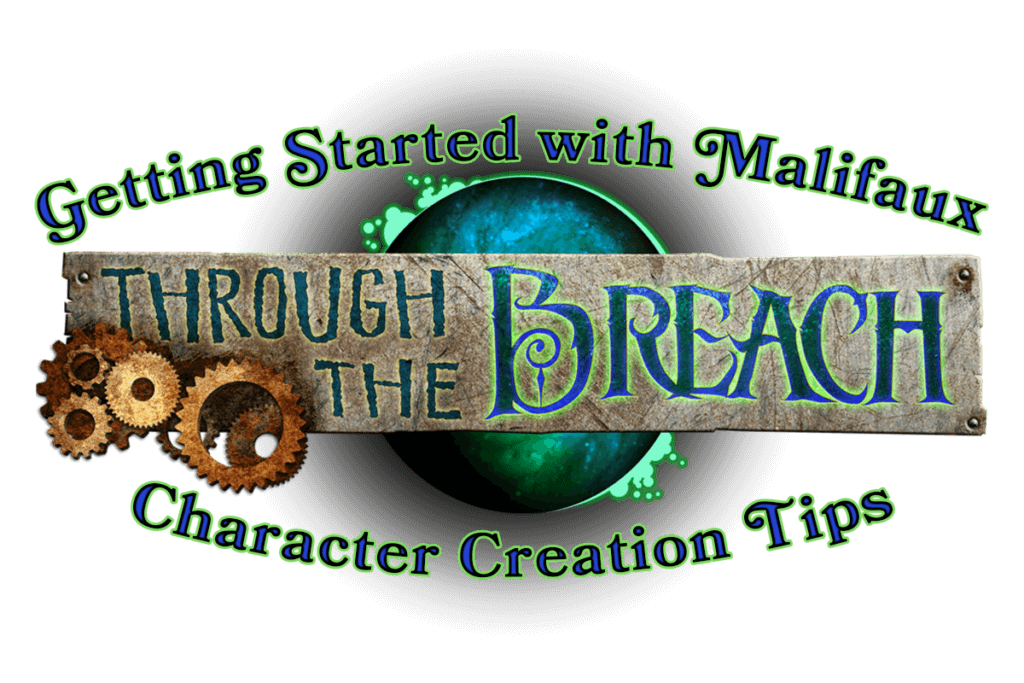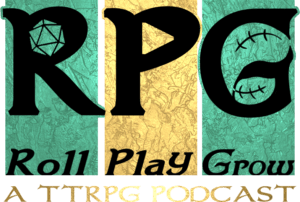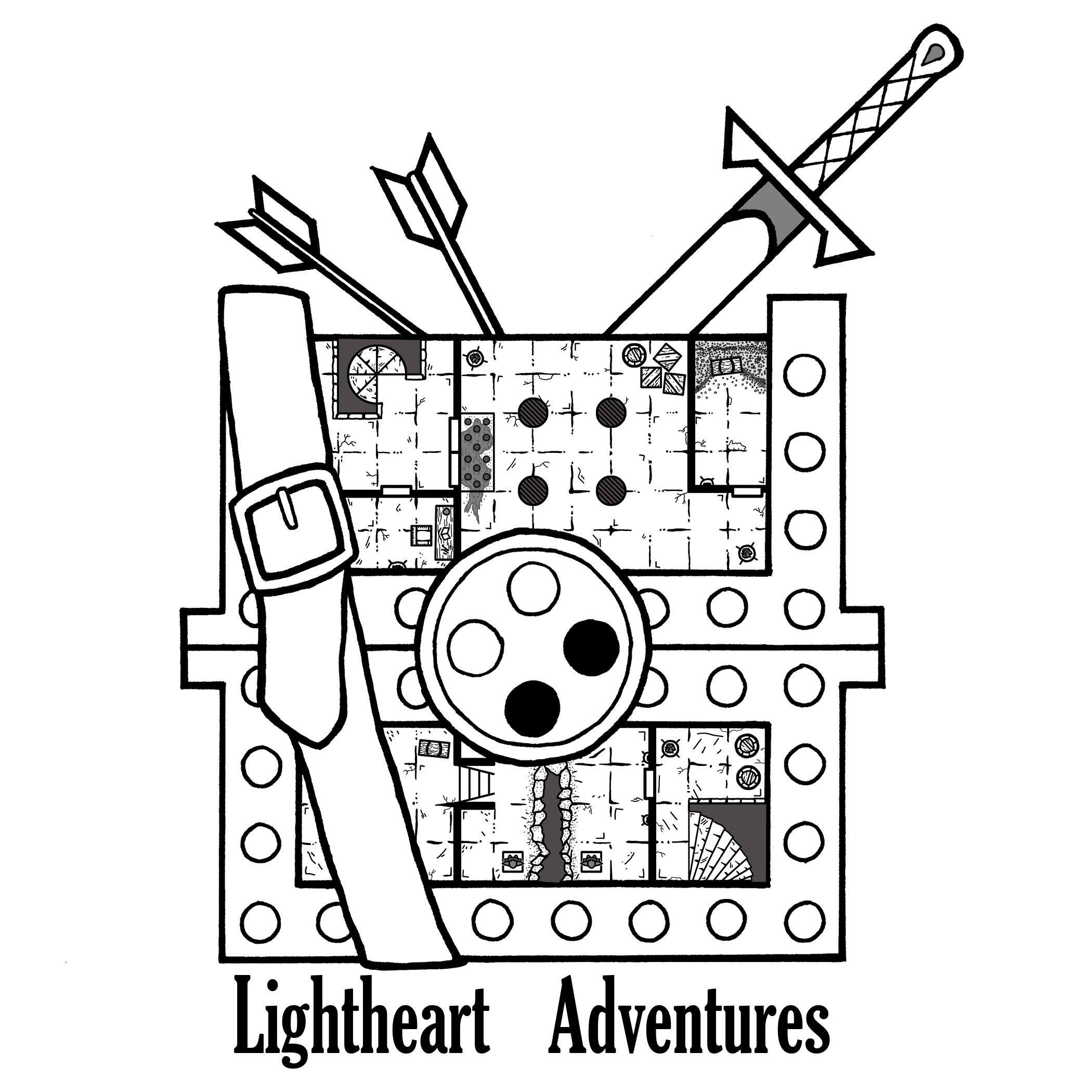Original logo from Wyrd Games
We’re jumping back into Malifaux today to discuss Through the Breach character creation tips! We recently wrote an introduction post giving you an overview of how Through the Breach works. We then introduced you to a free Side Quest adventure to give you an idea of game play and the spooky horror themes that coincide with the game. So now that you’re raring to try it out, let’s go over some of our best tips for Through the Breach character creation!
Disclaimer: This post contains affiliate links, meaning we may receive a small commission from qualifying purchases if you click on our links, at no additional cost to you. As Amazon Affiliates, we earn from qualifying purchases. You can read our full disclaimer here.
All Trademarks, including Malifaux, places, things and character names and their distinctive likenesses are property of Wyrd Miniatures, LLC.
Sequence of Events
Our favorite way to begin Through the Breach character creation is to pick a Pursuit and meld it with the stats you generate via cards. Pursuits are similar to Classes in other systems, but with a few big differences. Instead of picking one Pursuit and keeping it until you no longer play that character, you can change Pursuits at will before starting a new game chapter (usually coinciding with gaming sessions). It can also be a method for Fate Masters control the flow of the session. If your Fate Master is running a more social-leaning session, they may suggest you temporarily change your Pursuit. The longer a player sticks with a Pursuit, the stronger that profession becomes. Best of all, powers unlocked via the Pursuit track stay with the character even if they change between sessions.
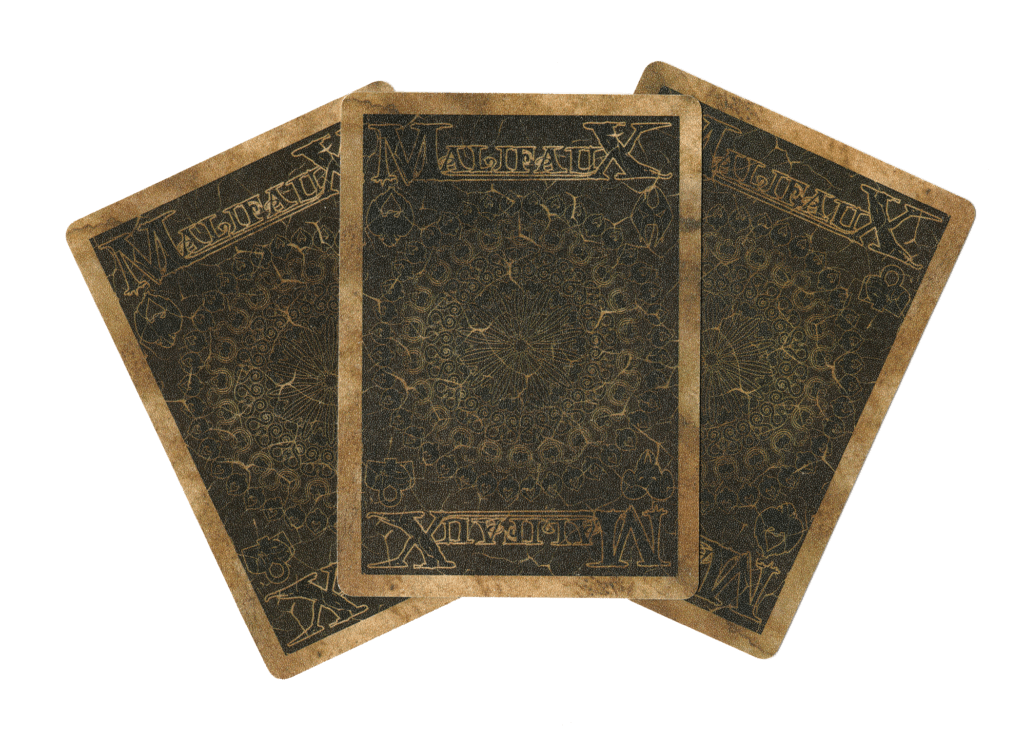
As with any game, different play styles allow for some rule tweaking, so I am going to share some tips and homebrew rules we’ve found helpful over in the Lightheart household.
The rules normally suggest waiting until near the end of character creation to pick a pursuit, but I recommend picking your Pursuit first. I’ve found that most players tend to stick with 2-3 Pursuits over their entire playtime with any given character. However, the first Pursuit chosen is often the one that guides their “thematic path.” I find it’s easiest to present the Pursuits to players, see which one strikes their fancy, then build their stats to reflect the play style they want.
Let's get flipping
Through the Breach character creation has a fascinating process for randomly generating the “Fated” characters as they’re known in the book. Rather than rolling dice and assigning numbers to stats, you build a “Tarot” of five cards that randomly determines your physical and mental stats, what skills you learned as you matured, and even your ultimate fate! Each expansion book of Through the Breach contains a different tarot shape and configuration to allow players to create various Fated from all walks of life. For today, we’re going to use the Tarot presented in the Core Rule book — the Cross Roads Tarot.
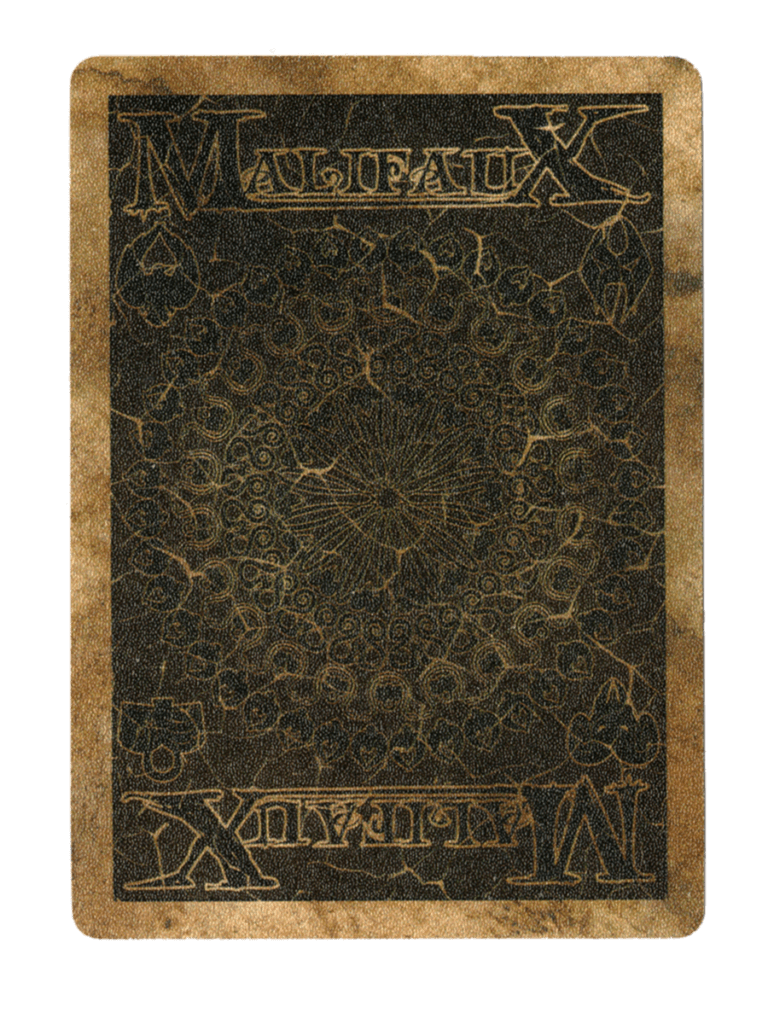
The first thing to do is break out a Fate deck or a standard 54 deck of poker cards. This includes 2 jokers–make sure the jokers are distinct. If not, you will need to note which one is the Red Joker and which is the Black Joker. We recommend using a Malifaux themed deck, as the game has its own suits, but if you only have a standard deck, use the following conversion chart:
Card Suit Conversion
Hearts = Rams
Spades = Crows
Clubs = Tomes
Diamonds = Masks
Regardless of the deck you choose, shuffle that sucker up, deal out five cards, and mark down the suit and numbers on paper. To keep with the theme of the book, the fun flair is to lay them down in a tarot shape. The first card goes in the center; the second card goes to the West (left of the Station card), the third to the North (above the Station card), the fourth to the East, and the fifth to the South.
- The first card you will flip is the Station card, which describes what kind of parents your character had ( I swear this will make sense in a bit).
- After that is the Body card, which involves the character’s physical stats, or Aspects.
- Next is the Root card, indicating the skills learned as your character grew up.
- The fourth card flipped is the Mind card, which tells us your character’s mental Aspects.
- Last is the Endeavor card, which are the skills your character learned as an adult.
Cards build character
With these cards set, it’s time to consult the reference tables starting on Pg. 82 of the Core Rule book. Each table depicts every card, which corresponds to a specific stat or skill the players receive. For example, I drew a 4 of Masks for my character’s Station card, which means my character’s parents were settlers, and I gained the skill Homesteading for free. Carry on with each card drawn (Body, Root, etc.) and write down the corresponding stats. Once that’s done, you’ll have a list that looks like this:
- Station: 4 of Masks – Settler/Homesteading
- Body: 8 of Masks – -1/-1/0/+2
- Root: 10 of Rams – 2,2,2,2,1
- Mind: 13 of Crows – -2/+1/+1/+1
- Endeavor: 5 of Tomes – 3,3,2,1,1
These are the basic starting stats that you can mold into a fledgling Fated! As a Fate Master, I like to let the cards decide the stats of characters, though sometimes people just get lame card draws. For my games I allow players to flip three characters and pick the one that most speaks to them and the concept they want to play. It’s pretty easy to draw two more sets of characters without investing too much time. I do recommend that they shuffle the cards back into the deck before the next character flip.
Play the cards where they lie
At this point, the book would normally have you assign your stats (Strength, Charm, Speed, etc) as you go along. I instead find it easier to wait until all the cards are flipped and then assign your Skill stats (Station, Root & Mind). My rationale is if you have a specific build in mind–say a quick-witted sharpshooter–it’s more efficient to assign your skill points first then pick your Aspects to better suit your skills. You can find the Skills table on Pgs. 170-171 of the Core Rule book. This table gives a brief description of which skills you can choose and their associated aspects. There are longer descriptions in the following pages.
Here’s my character’s Skill breakdown. I’ve listed the skill first, followed by the rank value I assigned it and the aspect it is associated with. Rank value corresponds to the stats I flipped. Example: remember that for Root I flipped the 10 of Rams which gave me an aspect spread of 2, 2, 2, 2, and 1:
Root Skills
Acrobatics: 2 / Grace
Centering: 2 / Tenacity
Husbandry: 1 / Charm
Music: 2 / Charm
Wilderness: 2 /Cunning
Station Skill
Homesteading: 1/ Tenacity
Endeavor Skills
Archery: 3 / Grace
Bewitch: 2 / Charm
Culinary: 1 / Charm
Enchanting: 3 / Charm
Intimidate: 1 / Tenacity
Each Skill has a corresponding Aspect, and we can see that my character has a focus on Charm and Grace, as five of the above skills use Charm, and two of them use Grace. There’s also a little Tenacity and Cunning in the mix. With our skills selected, we can assign Aspect values to better improve our skills! I will want to ensure that Charm and Grace have the highest value available from the stats that I flipped for their corresponding aspects (Charm is a mental aspect and Grace is a physical aspect). Here’s how I’m assigning them:
Physical Aspects
Might: -1
Grace: +2
Speed: -1
Resilience: 0
Mental Aspects
Charm: +1
Cunning: +1
Intellect: -2
Tenacity: +1
From here the character builder gives us two points to better flesh out our stats. With these points we can do two things:
- Increase one Aspect by +1, but you cannot go above a +3
- Gain two ranks in a skill you do not already possess.
For my character I’m going to give them a +1 in Grace and Charm to reflect the natural presence they gained.
Acting Values
The prime game mechanic in Through the Breach character creation for resolving actions or “Duels”, is to flip a card and combine the drawn number with your character’s corresponding “Acting Value”. You assign Acting Values (AV) by adding your character’s Skill rank with its parallel Aspect.
For example, in the above scenario, I assigned Archery a rank of 3. Archery’s paired Aspect is Grace, which I assigned at 2 and then gave it one of the bonus bumps to increase to 3. To find out my AV, I just add the two together to get +6. If I wanted to use a bow to hit a target, I’d flip a card and add my AV to that number, and the Fate Master would let me know if I succeeded. If I flipped a 10, that total would add up to 16. That is a pretty darn good hit for a rookie fated. With our combined Aspects and Skills, we can calculate our Derived Aspects, which tell us important stats such as Wounds (our character’s health points) and Walk (how far they can move in a turn). For more info on this, see pg. 79 of the Core Rules.
Money on my mind
Each Fated gets $10 in “scrip” to start the game with, and a few minor acquisitions, like a change of clothes, food to eat, and a place to sleep, so the Fated don’t start as beggars. This small allowance is more for starting equipment, such as weapons and armor as opposed to the kind of “adventure packs” one might find in D&D. In addition to the $10, each Pursuit has starting equipment related to the Pursuit’s theme. A Gunfighter starts with one or two pistols that cannot have a total combined value greater than $20, while a Mercenary starts with one Ranged Combat weapon and any armor, with a combined value costing no more than $20. The Core Rules has a pretty expansive equipment section starting on pg 224.
The Ultimate Fate
Last but not least are the Destinies derived from drawing cards on the Tarot. At the end of each reference table is a short phrase, that when strung together, is the predetermined destiny of our characters. Here is my Fated’s Destiny:
(5 of Tomes) When you wake from the dream of ancestors
(13 of Crows) you will shatter the stone
(10 of Rams) and you will drown in the sorrow of yesterday.
(8 of Masks) They sing for laughter, tears, and tomorrow
(4 of Masks) and you will splinter the white door.
Pretty heady stuff! While this may not make immediate sense, the Fate Master can take these somewhat convoluted destinies of each Fated and weave them thematically into the story. In terms of gameplay mechanics, each gaming session should focus on a Fated’s destiny step, and it’s up to the player to decide if they defy or accept their destiny and what that means to their character. Either way, when they hit this step, their choice signifies character progression, and the Fated gains either an increase to one of their Aspects or a magical ability.
Now that we’ve gone over all that, here’s a sample Through the Breach character creation sheet! These are available in multiple formats for a free download via the Wyrd website.
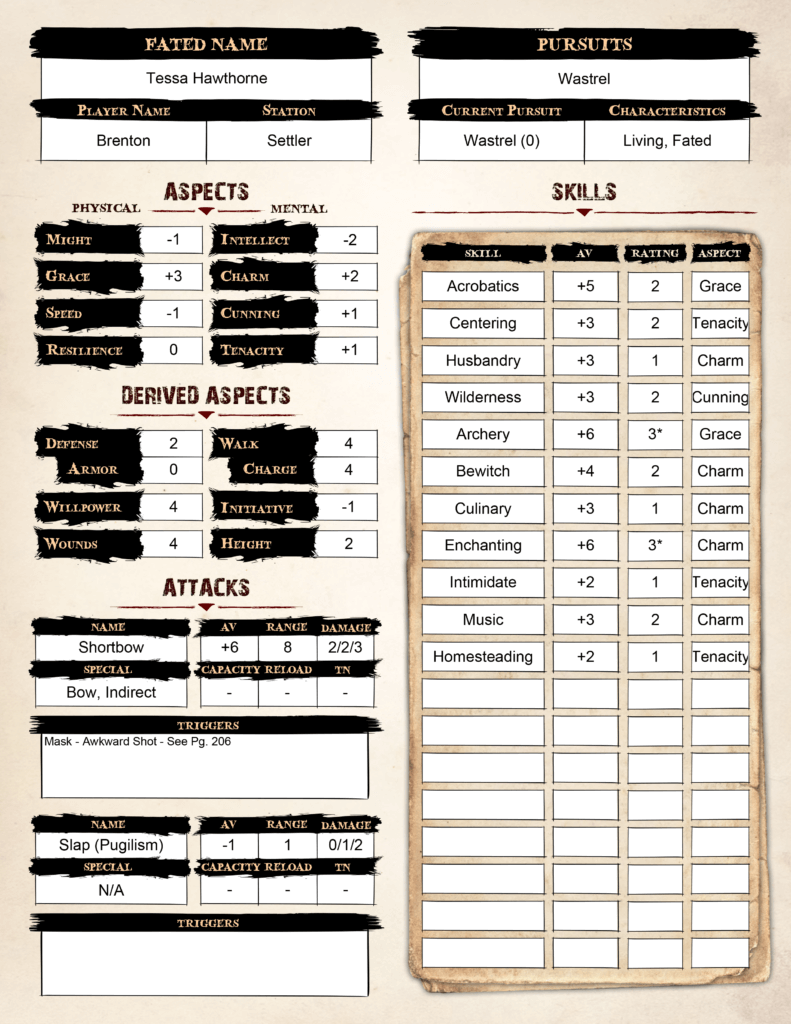
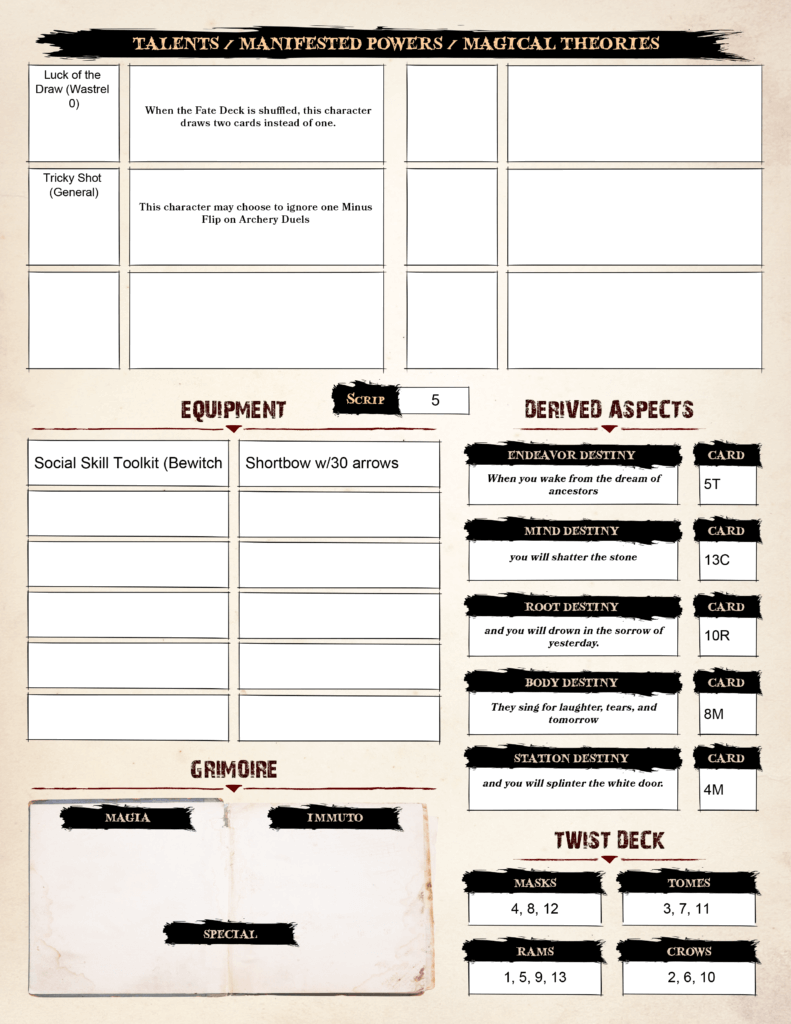
Wrap Up
And with that you’ve got yourself a Fated to find your destiny in Malifaux! There were a few small details I left out, such as Triggers and Talents, but I’ll save those for another day. Hopefully this piqued your interest in giving Through the Breach a start, but remember the motto of Malifaux:
Bad Things Happen
Thanks for dropping by! We would love to know if you give Through the Breach a try, so please drop a comment here on the blog, on Twitter, Facebook, Instagram, or Discord to let us know how it went! To learn more about Malifaux, be sure to check out our Introduction post and our free Through the Breach Side Quest adventure. Lastly, if you’d like access to more maps and content, including downloadable PDFs of our adventures, check out our Patreon. We’re able to do what we do because of all our amazing Patrons!
